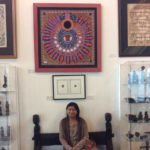Inang
Translated from the Filipino
Your callused palms have been thickened by sap from encrusted tobacco. This mortifies you when shaking hands, even when extending a hand, the roughness and spasmodic twitches from daylong contact of the arms, the body to harsh heat and sudden rain. You are not yet sixty, to my knowledge you are only fiftyish but already lined with sorrow: your face, much like your children who in their youth have been wizened to old age by the continued hoarseness of having to beg for morsels. It would have been nice if the callused pads of your palms were as thick as the pocket of your old shirt— you would rather work yourself to the bone all day as long as a festive bounty lines the kuribot and pasagad of your husband. The forced smile cannot hide the bleak outlook. Groaning is the stomach that twists from the prospect of backbreaking labor and monumental effort in exchange for a few coins.

Roda Tajon works for a non-governmental organization that advocates for indigenous peoples’ rights. She currently lives in Ilocos Sur and Quezon City.

Kristine Ong Muslim is the author of nine books of fiction and poetry, including The Drone Outside (Eibonvale Press, 2017), Black Arcadia (University of the Philippines Press, 2017), Meditations of a Beast (Cornerstone Press, 2016), Butterfly Dream (Snuggly Books, 2016), Age of Blight (Unnamed Press, 2016), and Lifeboat (University of Santo Tomas Publishing House, 2015). She is also the translator of several bilingual volumes: Marlon Hacla’s Melismas (forthcoming from Oomph Press) and There Are Angels Walking the Fields (forthcoming from Broken Sleep Books), as well as Mesándel Virtusio Arguelles’s Three Books (forthcoming from Broken Sleep Books), Hollow (forthcoming from Fernwood Press), Twelve Clay Birds: Selected Poems (forthcoming from De La Salle University Publishing House), and Walang Halong Biro (De La Salle University Publishing House, 2018). Widely anthologized, Muslim’s short stories have appeared in Conjunctions, Dazed Digital, Tin House,and World Literature Today. She grew up and continues to live in a rural town in southern Philippines.

 BACK TO ISSUE
BACK TO ISSUE